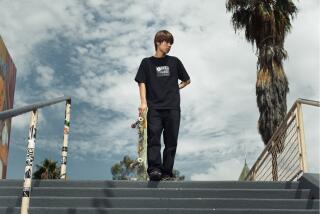Rollerblade Inc. Playing a Name Game
- Share via
You can call it in-line skating. You can call it skating on Rollerblades. You can even call it bladin’.
But don’t ever call it rollerblading.
“Never use the Rollerblade name as a verb,” Rollerblade Inc. warns the media in a terse publicity handout. “There is really no such thing as ‘rollerblading.’ ”
Rollerblade--along with such entities as Xerox and Levis--is trying to prevent its trademark name from becoming a generic term. If the name ends up in the public domain, the Minnesota-based company will lose its trademark, just as Bayer lost aspirin.
In the past four years, retail sales of Rollerblade have rolled from $3 million in 1987 to an estimated $40 million last year. Several other manufacturers--including Wayne Gretzky-endorsed Ultra Wheels--have entered the field since Rollerblade pioneered in-line skating 11 years ago. But Rollerblade is still so strongly identified with the sport that the company controls more than 70% of the $60 million market.
In-line skating first was developed in the Netherlands for racing on land. It never caught on in the United States, but a pair of in-line skates managed to wind up in a Minneapolis sports store and was discovered by brothers Scott and Brennan Olson, former high school hockey players. Operating out of their garage, they adapted the Dutch skate for summer hockey training.
In 1987, Rollerblade expanded its vision, stylized the boot and began marketing the skate to fitness buffs. And recognizing that national trends are often launched in Southern California, the company gave away hundreds of skates to beach rental shops.
That strategy apparently has worked--Southern California accounts for about one-quarter of Rollerblade’s overall retail sales--but the company’s campaign to protect its trademark is having less luck.
“The public is not going for it,” says Phyllis Fleschler, who runs Valley Skate & Surf in Sepulveda. “People call up and ask about rollerblading.”
More to Read
Inside the business of entertainment
The Wide Shot brings you news, analysis and insights on everything from streaming wars to production — and what it all means for the future.
You may occasionally receive promotional content from the Los Angeles Times.










